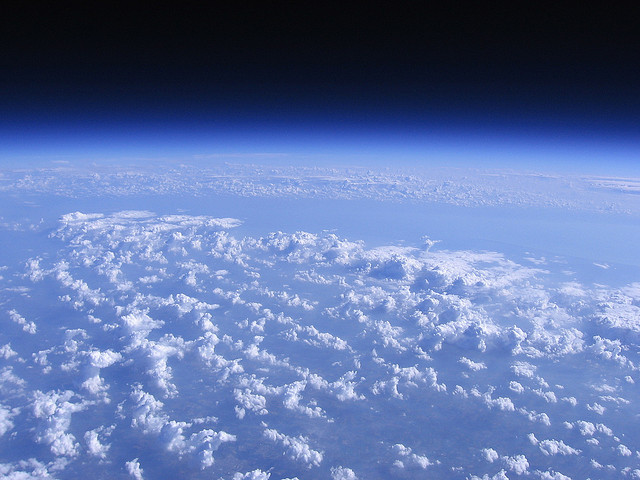Difference between revisions of "High Altitude Photographs"
Tom Bishop (talk | contribs) (A claim without demonstration, subtracting for now) |
Tom Bishop (talk | contribs) |
||
| Line 12: | Line 12: | ||
This is why the view is limited to the immediate vicinity below the observer, and why the land fades into a blueish fog as it recedes. The far distant horizon, upon which all is squished into imperceptiveness, is only sending light from which the rays of the sun reach. The darkened areas around the curve is night. | This is why the view is limited to the immediate vicinity below the observer, and why the land fades into a blueish fog as it recedes. The far distant horizon, upon which all is squished into imperceptiveness, is only sending light from which the rays of the sun reach. The darkened areas around the curve is night. | ||
| − | |||
==A View from Everest== | ==A View from Everest== | ||
Revision as of 01:58, 6 November 2019
Most pictures of the earth taken by amateur balloonists at very high altitudes are not doctored. Flat Earth Theory holds that there is elliptical curvature from the edge of space. Any photograph showing a curved elliptical horizon from very high altitudes poses no affront to FE.
Example: http://www.natrium42.com/halo/flight2/
Curvature results from the fact that at the edge of the atmosphere we are looking down at the illuminated circular area of the sun's light. The observer is looking down at a circle. A circle is always curved in two dimensions. When looking down at the circular area of the sun's light upon the earth we see elliptical curvature.
Why can't we see all of the continents of the earth from the edge of space?
Although the observer is looking downwards at the circle of the sun's spotlight, the distant continents of the earth are still thousands of miles away horizontally from the observer, and thus beyond the resolution of the human eye and merged with the line of the horizon, squished into indiscernibility and faded with the thickness of the atmosphere.
This is why the view is limited to the immediate vicinity below the observer, and why the land fades into a blueish fog as it recedes. The far distant horizon, upon which all is squished into imperceptiveness, is only sending light from which the rays of the sun reach. The darkened areas around the curve is night.
A View from Everest
Click here to take in the view
|

